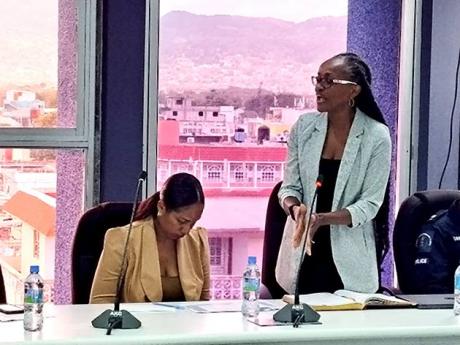St James medical officer: Monitoring mosquito-breeding sites is a personal responsibility
WESTERN BUREAU:
Dr Francine Phillips-Kelly, the medical officer of health for St James, is advising that the monitoring of mosquito-breeding sites remains the personal responsibility of homeowners.
Phillips-Kelly gave the reminder while addressing last Thursday’s monthly meeting of the St James Municipal Corporation, during the presentation of the St James Health Department’s monthly report in relation to the spread of dengue fever.
“Let us be reminded that each individual has a personal responsibility, as mosquito breeding occurs in all of our domestic areas. It is not out in the bushes; it is not in the gullies. The Aedes egypti specifically, the one that causes dengue, is a domesticated mosquito, and it is where you are,” said Phillips-Kelly.
“It might very well be in this building, because wherever there is any amount of water available, the mosquito can lay her eggs and they can hatch. And once they hatch, female mosquitoes will continue to try to have more babies, which is what they do. Personal responsibility is to reduce the breeding in your office, in your home, in your backyard; wherever you are,” Phillips-Kelly added. “So that means no garbage tossed around, no toys left out for collection of water. And even leaves that have fallen, once there is enough water on them, the female mosquito can lay her eggs so they can be hatched.”
The warning comes amid reports of St James’ shifting numbers for its local Aedes index in monitoring the parish’s mosquito population. The latest Aedes index of eight per cent in March, which was the same number for February, is a reduction from the nine per cent recorded for January but higher than the seven per cent recorded in December 2023.
HIGH-RISK COMMUNITIES
The St James Health Department has been seeking to bring the Aedes index down to five per cent or less each month. The lowest figure recorded in the parish was four per cent in July 2021, while the highest was 30 per cent in August 2023.
Phillips-Kelly also warned that care must be taken to clean all vessels in and around the home where water may be collected and where mosquito-breeding sites may be identified.
“Once they are laid, these eggs are hardy. So even if the water dries up from the area where they were laid originally, once the eggs have not been removed by physical abrasion of the area, then those eggs will hatch once there is water refilling that area, and they have over 300 days of life. If you have a lovely garden and you would not have changed the water or scrubbed the inside of your vase, were there eggs laid there prior to you pouring out the water? Then if you did not remove those eggs, refilling that wonderful vase will allow for hatching of the eggs,” said Phillips-Kelly.
St James’ Acting Chief Public Health Inspector Nadia Burgess told the meeting that the health department continues its monitoring activities in areas with a high Breteaux index, that is the feature which is used to measure the number of containers found to be positive for mosquito-breeding sites per 100 households.
“Our Breteaux index is now 15 per cent as at the end of March 2024. We were able to visit 22,626 premises for the parish, and 1,866 of these premises were positive for mosquito breeding. We continue our activities in our high-risk communities, and these are communities that have a high Aedes index and a high Breteaux index, as well as issues with water distribution where they have to resort to storing water in containers,” Burgess outlined.

